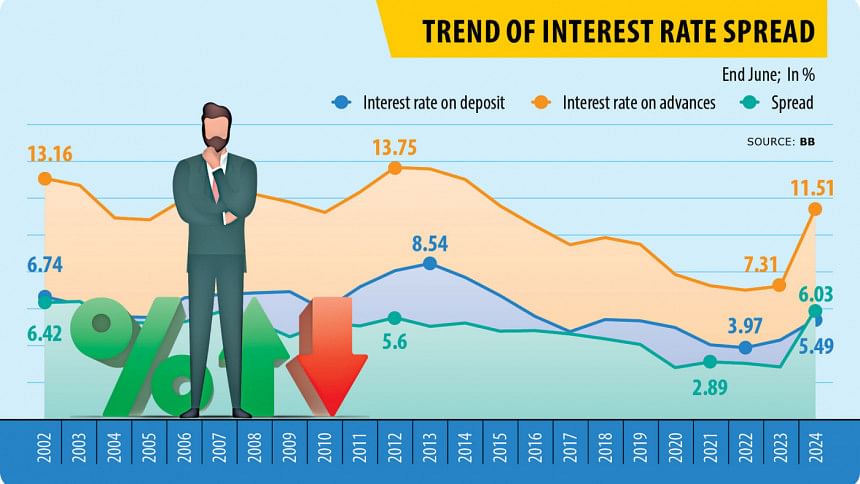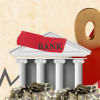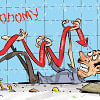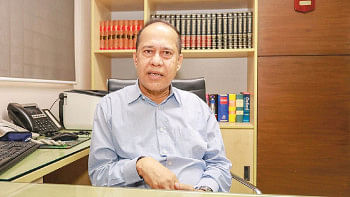Interest rate spread rises to highest level since 2003

The spread between interest rates on deposits and loans rose to 6.03 percent, the highest in two decades, indicating that banks are making money at the expense of depositors and borrowers.
The spread, which fell to 2.93 percent in June 2023, began increasing as the interest rate started moving upwards since July last year, when the Bangladesh Bank lifted the 9 percent cap on lending and introduced the Six-months Moving Average Rate of Treasury bills (SMART).
The central bank introduced the formula in line with the prescription of the International Monetary Fund (IMF) to contain persistent inflation by allowing the market to determine the interest rate gradually.
The Bangladesh Bank later in May this year scrapped the SMART so that the interest rate becomes fully market-driven.
Central bank data showed that over the last year, interest on deposits and loans grew. However, the extent of the spike in the interest rate on advances or loans was higher than the increase in the rate of deposits.
For instance, the weighted average interest rate on deposits rose by 1.11 percentage points to 4.46 percent in June this year from 4.38 percent a year ago.
The weighted average interest rate on advances soared 4.21 percentage points to 11.52 percent in June this year from 7.31 percent in June 2023, according to the data.
This widened the spread between the lending and deposit rates offered by banks above 6 percent which was recorded last in December 2003.
At the end of 2003, the spread between weighted average lending and deposit rates was 6.11 percent.
Since then, it had been falling before starting to regain at the onset of FY24. The spread stood at a two-decade high when the year that ended on June 30.
"It is unusual. It is too much. The high gap shows that banks are ultimately benefiting," said Shah Md Ahsan Habib, a professor at the Bangladesh Institute of Bank Management.
He said the interest rate spread should be between 3 and 4 percent or 5 percent at best.
"Savers must benefit from the interest rate spike. But the current spread indicates that they are not," Habib added.
On the other hand, borrowers are retraining from borrowing because of increasing interest rates and this is not an expected outcome of the market-driven interest rate system, he added.
"This high difference shows that the operational costs of banks are high," said Habib, adding that the central bank should give a signal to the market to bring down the spread.
Mohammad Ali, managing director and CEO of Pubali Bank PLC, one of the oldest banks in the country, said one of the main factors is the interest differential between cash-rich and cash-starved banks.
"Banks suffering from a cash crisis are offering as much as 11.5 percent interest on fixed deposits. On the other hand, banks that do not have cash shortages are giving low interest rates," he added.
Various bankers said troubled banks have not hiked the interest on deposits and savers there are facing difficulty in withdrawing their deposits. However, they increased the interest rate on loans.
"They are practically not giving any loans. What we see is paperwork," said a top banker on condition of anonymity.
Ali said the profits of some banks have increased because of the higher spread.
"Because of goodwill, we are getting fixed deposits every day. So, driven by markets, we are bringing down the interest rate. However, we have not increased the rate on loans to that extent," he added.
Syed Mahbubur Rahman, managing director and CEO of Mutual Trust Bank PLC, said the spread between deposits and loans has increased due to low rates offered by some foreign banks.
"Their cost of deposits is much lower than ours. Their organisations are lean and have a small number of branches. Besides, they get some deposits automatically," he added.
Rahman also said that amid concerns regarding the health of banks, savers now look for sound banks to park their funds.
"Besides, many individuals now invest in government treasury bonds to reap the benefit of high interest rates and avoid risk," he added.
Monzur Hossain, research director of the Bangladesh Institute of Development Studies, said the high spread hurts both depositors and borrowers.
He believes the interest rate spread in developing countries like Bangladesh should not cross 5 percent.
"The best would be to keep the gap at 4 to 4.5 percent in line with international best practices," he said.
"Otherwise, the widened gap indicates the inefficiency of the financial sector. It shows that they [banks] are depending on interest incomes. Banks should maintain a rational spread," Hossain added.
The Bangladesh Bank data shows that the spread between weighted average deposits and advances stood at 6 percent, excluding the high interest-bearing credit card. However, the gap widens further to 6.11 percent if the interest rates for consumer credit are taken out of the overall weighted average rates.

 For all latest news, follow The Daily Star's Google News channel.
For all latest news, follow The Daily Star's Google News channel. 





Comments